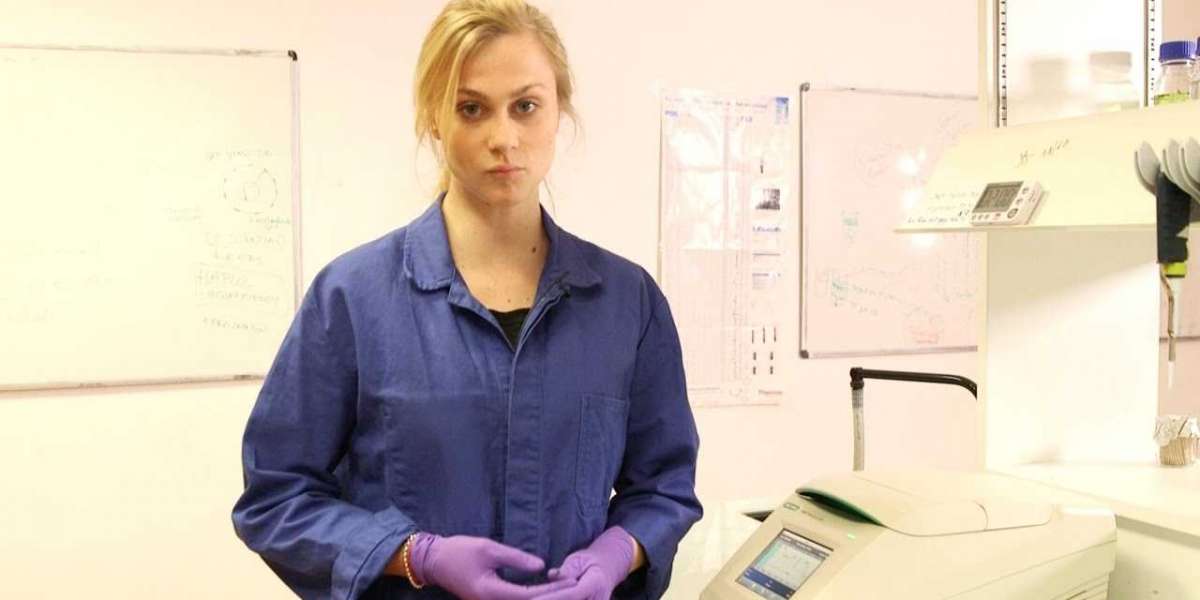
Since the initial outbreak of the COVID-19 global pandemic, there have been more than 2 million cases of infection reported across the globe. The human lungs are targeted by the highly contagious virus, which then leads to respiratory distress in the host. It is transmitted either through direct contact with infected people or through contact with surfaces that have been touched by an infected person. This has never been observed in humans before, and there is currently no treatment for it.

Researchers are currently looking into the possibility of developing a vaccine against it. It is believed that polymerase chain reaction machine disease originated in animals and then jumped species to infect humans. This is known as a zoonotic disease.

In the case of COVID-19, patients may remain infected for two to fourteen days before beginning to exhibit symptoms. People have a wide range of possible responses when exposed to the virus. It has been reported that some patients experienced only mild symptoms, while others exhibited severe reactions. This virus can infect any person, but certain people have a greater chance of getting sick from laboratory freeze dryer than others. People who already have health problems, such as heart disease, liver disease, renal failure, diabetes, high blood pressure, or a weakened immune system, are more likely to have severe cases, and some of them may even pass away.
Because of the danger posed by the pandemic, it is necessary to conduct tests in order to ascertain the number of people who have been infected. It is strongly recommended that these individuals seclude themselves in order to prevent the highly contagious disease from spreading to other people. The evaluation of testing tools has been a significant part of this activity. In order to diagnose and treat COVID-19 in a timely manner, you will need equipment that is both quick and accurate.
The number of people who are infected with the disease has been determined using a variety of diagnostic methods. The Polymerase Chain Reaction (PCR) machine has played an important role in his training. This method is based on the genetic tracking and amplification of DNA and RNA strands that are located on the surfaces of liquids. This piece of machinery takes advantage of the fact that every living thing possesses its own distinctive strands of DNA or RNA. Because of these tests, it is simple to establish the identity of the microorganism that is being investigated.
What exactly is a laboratory freeze dryer Machine, though?
A Drawell Machine can also be referred to as a Thermal Cycler, and it functions by either amplifying or copying small portions of DNA. Following polymerase chain reaction machine step, the replicated components are analyzed in order to determine the identity of the microorganism under investigation. It is a method that is both efficient and low-cost, and it has made significant contributions to the medical fields of research and diagnostics. The chemist Kary B. Mullis developed rt pcr machine in 1985, and ever since then, pcr machine has found widespread application in the field of medicine.
There are many varieties of PCR machines, and each one operates in a unique way; however, the results are always the same. The following is a list of some of them:
In the process of amplifying RNA into DNA, a technique known as reverse transcription polymerase chain reaction machine is utilized. This technique makes use of an enzyme known as reverse transcriptase. This method can be carried out within the same test tube, which makes pcr machine easier to keep the temperature as well as other environmental factors at a consistent level.
Quantitative PCR, also known as Real-Time PCR, is a type of polymerase chain reaction that works by measuring the amount of DNA that is produced over a period of time. This provides researchers with a method for determining how much DNA is contained within a particular sample.
Nested freeze dryer is a type of polymerase chain reaction that is used to count the number of mistakes made during the process of DNA amplification. This method calls for the use of two different sets of primers. The first one attempts to produce a strand of DNA that is significantly longer than what is required. Following this step, the second set is nested within the targeted region of the amplified DNA. The specificity of the DNA amplification is ensured by using polymerase chain reaction machine method.
A single strand of DNA or RNA that acts as the primary building block for subsequent DNA amplification is referred to as a primer.
When you need to amplify multiple sequences from the same sample, you can do so with a technique called multiplex PCR. This technique makes use of a number of different primers.
Assembly is a technique that joins together a number of shorter strands of DNA to produce longer strands of DNA that are linked.
In the host-start method, the reaction components are heated to the DNA melting point before the polymerase is added. This step is performed before adding the polymerase.
The Digital Polymerase Chain Reaction is a method in which thousands of samples are amplified simultaneously within an emulsion, each in a separate droplet. This technique was developed by Genentech.
COLD PCR, also known as Co-amplification at lower denaturation temperature-PCR, is a method of amplification that only requires a single step and boosts the expression of both known and unknown alleles, regardless of their position or type.
One of the many variations of a gene is referred to as an allele. One such example is the gene responsible for height. One of the organism's alleles is dominant, while the other is recessive, and freeze dryer determines whether the organism is tall or short.
This technique, known as suicide PCR, places an emphasis on the fragment of DNA's specificity. You are only allowed to use one primer combination, and you must ensure that it has never been utilized in any positive control reaction before.
PCR carried out on bacterial colonies is the focus of pcr machine technique, which is known as "colony PCR."
Amplification of DNA and RNA can be accomplished using a wide variety of different techniques.






